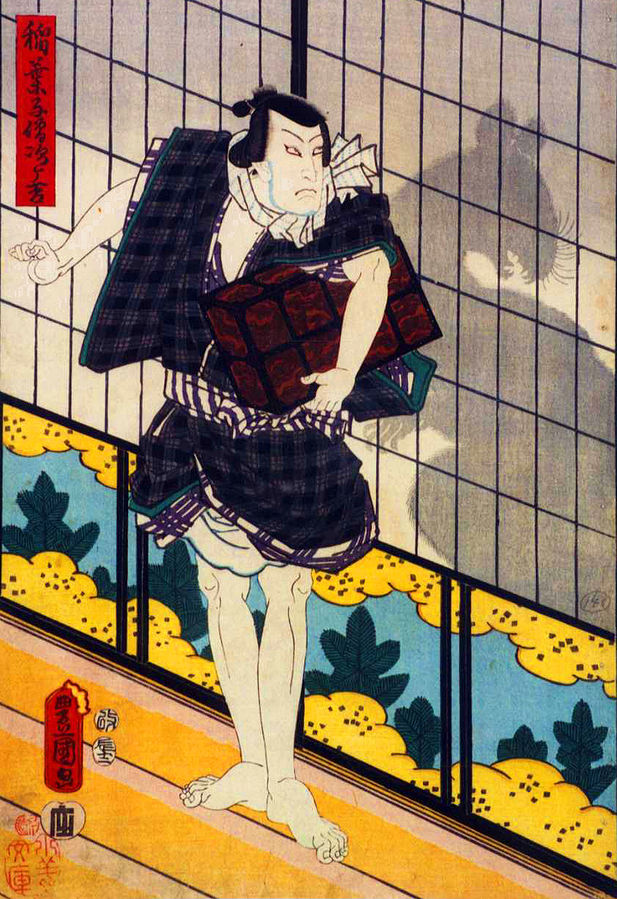
Nezumi Kozō: Japan’s Very Own Robin Hood
Nakamura Jirokichi (仲村次郎吉, 1797 – 1831) was a Japanese thief who became a folk hero by stealing from the rich and giving to the poor, much like the infamous Robin Hood. He was also nicknamed Nezumi Kozō (鼠小僧). Nezumi means “rat” and Kozō is a term used for errand-boys in the Edo period. Kozō is a nickname usually given to pickpockets, often young girls and boys with nimble fingers.
During the Edo period, Nakamura Jirokichi supposedly robbed more than 100 samurai homes, amassing a huge fortune that he gave away to the poor. In 1822, he was eventually caught and subsequently banished from Edo (now known as Tokyo). He was caught yet again on the 8th of August 1883, when he confessed to burglarizing over 100 samurai estates and 30,000 ryō in a span of 15 years. When Nakamura Jirokichi was arrested, very little money was found on him.
Nezumi-kozō Jirokichi depiction.
The daimyo also felt publicly humiliated by his stealing from them. This gave birth to the popular legend that he gave the money he stole back to the poor, turning Nezumi Kozō into a legendary folk hero.
At the time, the punishment for theft was very cruel. Prior to being caught, Nezumi Kozō served his wives divorce papers to save them from perishing from the same kind of persecution and punishment, as devreed by the law of the time. He was tied to a horse, a true spectacle as he was paraded around the town, and was eventually beheaded at the Suzugamori execution grounds. Nakamura Jirokichi’s head was placed on a stake for public display and his body was buried at Ekō-in, in the Ryōgoku area of Tokyo. So many pilgrims gathered at his grave site and chipped away pieces of stone for keepsakes that it had to be reconstructed.
Nezumi Kozō has become a legend throughout history. He is popularly depicted in folk songs, kabuki theatre, video games, and today’s pop culture.

